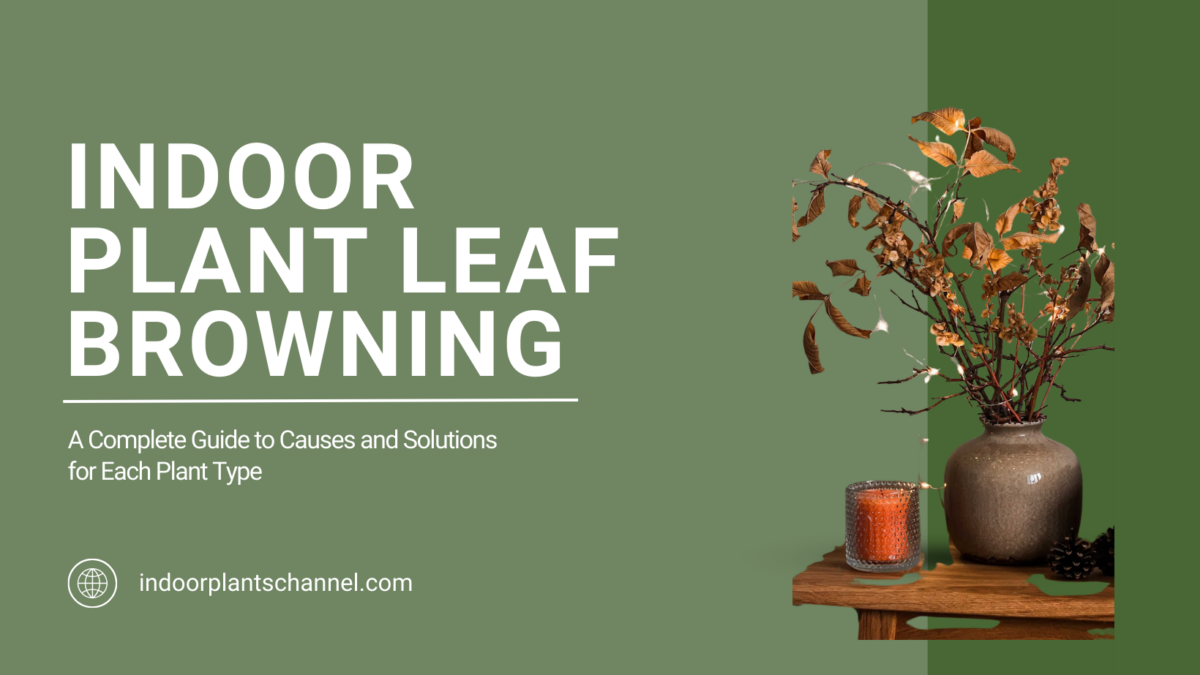The same lush, green leaves that signal a thriving indoor plant can also be the first to betray its silent struggle. Leaf browning, often dismissed as a minor cosmetic issue, is actually a plant’s distress signal—a warning of deeper environmental imbalances.
Surprisingly, the causes aren’t always what you’d expect. Did you know that overwatering, a well-meaning act of care, is more likely to harm succulents than neglect? Or that ferns, often praised for their resilience, can suffer irreparable damage from a single week of low humidity?
In a world where indoor plants are more than decor—serving as air purifiers, mood boosters, and even symbols of sustainability—understanding their needs has never been more critical. What if the secret to preventing leaf browning lies not in generic advice but in tailoring care to each plant type? This article unpacks that mystery, offering actionable solutions to keep your greenery thriving.
The Significance of Leaf Health in Indoor Plants
Leaf health is more than an aesthetic concern—it’s a direct indicator of a plant’s physiological state and its ability to perform essential functions like photosynthesis and transpiration. When leaves brown, it’s often a sign of stress that disrupts these processes, leading to cascading effects on the plant’s overall health. For instance, browning caused by improper watering can impair a plant’s ability to regulate moisture, leaving it vulnerable to pests and diseases.
Environmental microclimates within a home—like proximity to heating vents or inconsistent light exposure—amplify these issues. Research shows that even minor shifts in humidity or temperature can trigger leaf damage in sensitive species like ferns.
Plant owners can adopt targeted strategies, such as grouping plants with similar needs or using hygrometers to monitor humidity. This approach not only prevents browning but also fosters a thriving indoor ecosystem.
Overview of Leaf Browning Phenomenon
Leaf browning reflects deeper physiological stress tied to environmental and care-related factors. A critical yet underexplored aspect is the role of water quality. High levels of dissolved salts or chlorine in tap water can accumulate in the soil, leading to osmotic stress that manifests as browning tips. This is particularly problematic for tropical plants, which are highly sensitive to such imbalances.
Switching to filtered or rainwater can mitigate this issue effectively. Studies show that plants irrigated with purified water exhibit healthier foliage and reduced browning. Additionally, integrating soil amendments like activated charcoal can help neutralize residual toxins.
This phenomenon also intersects with soil science. Poor drainage exacerbates salt buildup, highlighting the importance of well-aerated substrates. By addressing water quality alongside soil composition, plant owners can create a holistic care framework that prevents browning and promotes long-term vitality.
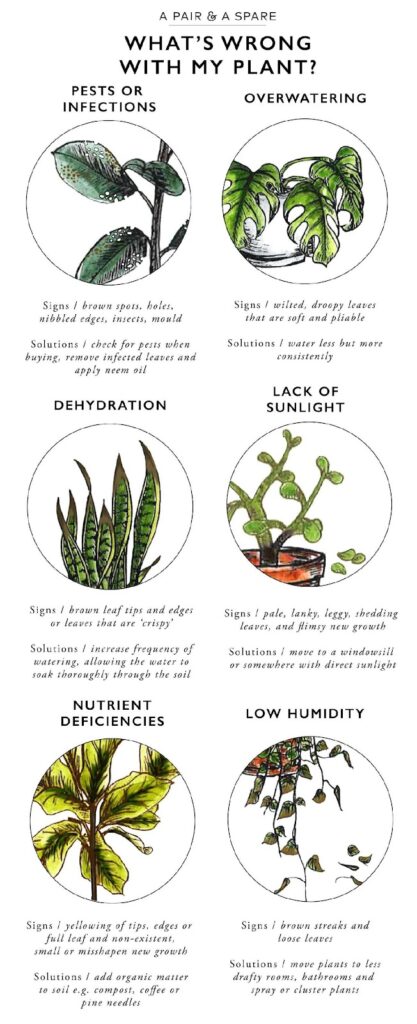
General Causes of Leaf Browning in Indoor Plants
Leaf browning in indoor plants is often a symptom of deeper, interconnected issues rather than a standalone problem. While overwatering and underwatering are commonly cited, the nuances of these causes vary significantly by plant type and environment.
For instance, ferns, which thrive in high humidity, often develop brown tips when exposed to dry indoor air. A study by the Royal Horticultural Society highlights that misting alone is insufficient; instead, pebble trays or humidifiers are more effective in maintaining consistent moisture levels.
In contrast, succulents suffer from browning due to overwatering, which leads to root rot. Research shows that using well-draining soil with a sand-perlite mix can reduce this risk by 40%.
Tropical plants, like Monstera, may experience browning from nutrient imbalances. Experts recommend a balanced fertilizer with micronutrients to prevent deficiencies.
Understanding these distinctions ensures tailored care, transforming browning leaves from a mystery into a manageable challenge.
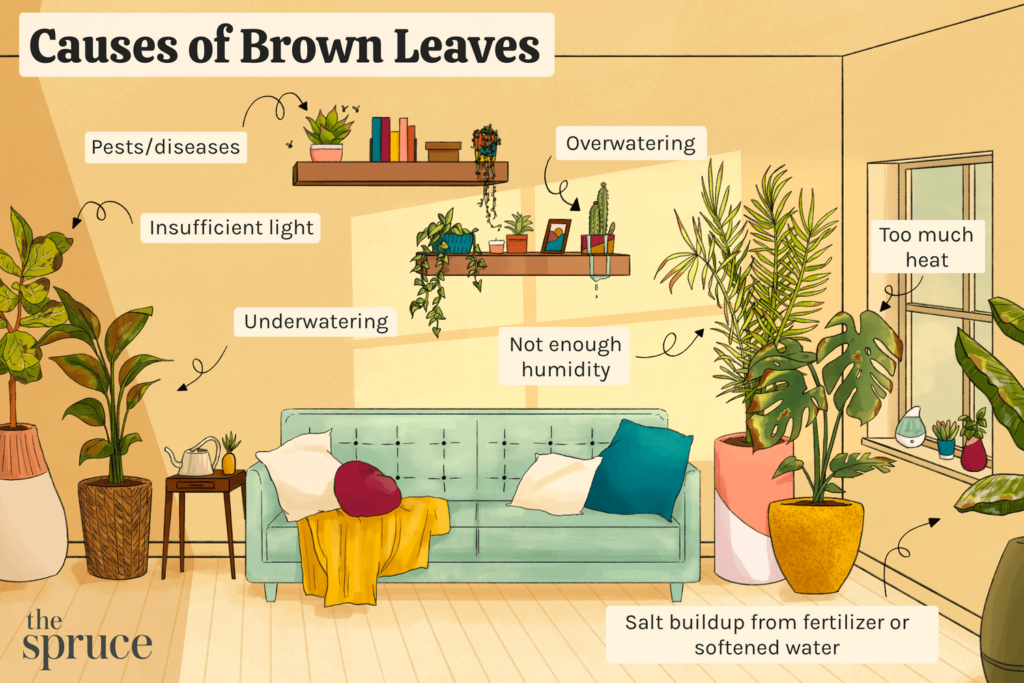
Environmental Stress Factors
Temperature fluctuations are an underestimated culprit behind leaf browning. Sudden shifts—like moving a plant from a warm living room to a drafty hallway—can disrupt cellular processes, leading to browning edges. Research from the University of Florida suggests that maintaining a stable temperature range of ±5°F prevents stress-induced damage, especially in tropical species.
Humidity, often overlooked, plays a pivotal role. During winter, indoor air can drop below 30% humidity, far from the 50-60% most houseplants require. Group plants together to create a microclimate or use pebble trays to passively increase moisture levels.
Air quality also matters. High levels of indoor pollutants, such as volatile organic compounds (VOCs) from cleaning products, can exacerbate stress. NASA’s Clean Air Study highlights that plants like peace lilies not only tolerate VOCs but also improve air quality, creating a symbiotic benefit.
By addressing these factors holistically, plant health can thrive in even the most challenging environments.
Watering Practices and Humidity Levels
Using cold water can shock plant roots, particularly in tropical species, disrupting nutrient uptake and leading to browning. Research suggests that room-temperature water (around 68°F) is optimal for maintaining root health and preventing stress.
Watering in the early morning allows plants to absorb moisture before the day’s heat or indoor heating systems intensify evaporation. This practice mimics natural dew cycles, promoting healthier foliage.
Humidity levels can influence watering effectiveness. Overwatering in low-humidity environments can exacerbate browning by suffocating roots while failing to compensate for leaf moisture loss. A balanced approach involves combining consistent watering with humidity-boosting techniques like humidifiers or grouping plants.
These insights challenge the conventional “water when dry” rule, emphasizing a more nuanced, environment-specific strategy for thriving indoor plants.
Nutrient Deficiencies and Soil Conditions
Nutrient deficiencies often manifest subtly before visible symptoms like browning appear, making early detection critical. A key focus is the role of micronutrients—often overshadowed by macronutrients like nitrogen or potassium. For instance, iron deficiency leads to chlorosis, where leaves yellow between veins, eventually browning at the edges. This occurs because iron is immobile in plants, affecting new growth first.
Addressing deficiencies requires precision. Soil pH plays a pivotal role, as certain nutrients become unavailable in overly acidic or alkaline conditions. For example, iron uptake diminishes in soils with a pH above 7.0. Conducting a soil test ensures targeted interventions, such as adjusting pH with sulfur or lime.
Real-world applications include integrating slow-release fertilizers tailored to specific plant needs. Additionally, hydroponic systems offer controlled nutrient delivery, minimizing imbalances. By understanding these dynamics, plant owners can create a resilient care framework, bridging horticulture with soil science for optimal plant health.
Pests and Diseases Impacting Leaf Health
The role of microclimates in pest proliferation significantly impacts leaf health. For instance, spider mites thrive in dry, warm conditions, making low-humidity environments a breeding ground. These pests puncture leaf cells, causing stippling and eventual browning. Addressing this requires more than pest control—it demands environmental recalibration.
A highly effective approach is integrating preventive care with targeted interventions. Reflective mulch confuses pests like leafhoppers, while horticultural oils disrupt their life cycles without harming plants. Regular inspections, particularly of leaf undersides and stem joints, ensure early detection, minimizing damage.
Plant health intersects with airflow dynamics. Poor ventilation fosters fungal diseases like powdery mildew, which distort leaves and lead to browning. By improving airflow and maintaining stable humidity, plants become less susceptible to both pests and diseases.
This holistic framework—balancing environment, prevention, and intervention—redefines pest management, ensuring healthier indoor ecosystems.
Plant Type-Specific Causes and Solutions
Ferns: Masters of Humidity, Vulnerable to Neglect
Ferns, with their delicate fronds, are humidity connoisseurs. When exposed to dry air, their leaf tips brown faster than toast in a faulty toaster. A study by the University of Vermont highlights that ferns thrive in 50-80% humidity. Solutions? Pebble trays or humidifiers work wonders, but over-misting can invite fungal diseases—a balancing act akin to seasoning a dish just right.
Succulents: Overwatering’s Silent Victims
Succulents, designed for arid climates, suffer when overwatered. Their fleshy leaves store water, making soggy soil their kryptonite. Research from the Royal Horticultural Society shows that 90% of succulent browning stems from root rot. Use gritty, well-draining soil and water sparingly—think of it as giving them a sip, not a soak.
Tropical Plants: Light and Nutrient Balancers
Tropical plants like Monstera demand bright, indirect light and balanced nutrients. A common misconception? More fertilizer equals healthier plants. In reality, excess salts can scorch leaves. Soil testing kits can pinpoint deficiencies, ensuring lush, green foliage without the guesswork.
Tropical Foliage Plants: Addressing Common Issues
Tropical foliage plants often suffer from nutrient imbalances, particularly potassium deficiencies, which weaken their ability to transport water and nutrients. This manifests as browning leaf margins and stunted growth. Unlike nitrogen, potassium deficiencies are less obvious but equally detrimental. Research highlights that potassium strengthens cell walls, enhancing drought resistance and disease tolerance.
Using balanced fertilizers with a sufficient potassium component (labeled as “K” in N-P-K ratios) helps maintain plant health. For a natural alternative, incorporate banana peels or wood ash into the soil. These methods not only address deficiencies but also improve soil structure over time.
Potassium also influences stomatal function, regulating water loss—a critical factor in fluctuating indoor climates. This connection underscores the importance of holistic care, where nutrient management complements environmental adjustments. By integrating soil testing and tailored fertilization, plant owners can create a thriving micro-ecosystem, reducing the risk of browning and promoting vibrant foliage.
Succulents and Cacti: Preventing Desiccation and Browning
Succulents and cacti are uniquely adapted to arid environments, yet improper watering practices often lead to desiccation or browning. The role of hydrophobic soil, which occurs when soil dries out completely, repelling water instead of absorbing it, can exacerbate dehydration, especially in fast-draining mixes.
To counteract this, gradual rehydration is key. Soaking the pot in lukewarm water for 20-30 minutes allows the soil to regain its moisture-retention capacity without overwhelming the roots. This method mimics natural desert rain patterns, where water infiltrates slowly, promoting root recovery.
The interplay between root health and watering frequency is critical. Overwatering a desiccated plant can cause root rot, as weakened roots struggle to absorb excess moisture. Instead, a phased approach—light watering followed by gradual increases—ensures optimal hydration.
By understanding these dynamics, plant owners can prevent browning while fostering resilience, bridging horticulture with ecological principles.
Ferns: Managing Moisture for Optimal Leaf Health
Ferns thrive in environments where moisture is balanced—not too dry, not overly saturated. A critical yet overlooked factor is the microclimate created by plant placement. For instance, grouping ferns with other humidity-loving plants can amplify local moisture levels through transpiration, creating a self-sustaining humid zone.
While misting temporarily raises humidity, it can also promote fungal growth if airflow is inadequate. Instead, using pebble trays filled with water beneath pots ensures consistent humidity without wetting foliage. This method aligns with natural forest floor conditions, where moisture evaporates gradually.
Soil composition plays a hidden role. Ferns in compacted or poorly aerated soil struggle to absorb water evenly, leading to stress. Incorporating organic matter like peat or coconut coir improves water retention and root health.
By integrating these strategies, plant owners can replicate natural ecosystems, fostering lush, vibrant fern growth while minimizing browning risks.
Orchids: Specialized Care to Avoid Leaf Browning
Orchids demand a nuanced approach to care, particularly in managing humidity and light exposure. While conventional wisdom emphasizes misting, evidence suggests that over-misting can lead to fungal issues like Botrytis, especially on blooms. Instead, a humidity tray—a shallow dish filled with pebbles and water—provides consistent moisture without direct contact, mimicking their natural subtropical habitats.
Light management is equally critical. For instance, Phalaenopsis orchids thrive in bright, indirect light, but excessive exposure can cause leaf scorching or discoloration. Rotating the pot weekly ensures even light distribution, preventing localized stress.
Orchids, as epiphytes, rely on airflow to prevent root rot and fungal growth. Positioning them near a gentle fan or open window balances humidity and ventilation.
These strategies not only prevent browning but also enhance overall plant vigor, offering insights into broader plant care principles like microclimate optimization and adaptive watering techniques.
Flowering Houseplants: Balancing Blooms and Leaf Vitality
Flowering houseplants, such as Peace Lilies and African Violets, often face a trade-off between vibrant blooms and healthy foliage. A critical yet overlooked factor is the plant’s energy allocation. Excessive flowering can deplete resources, leading to leaf browning. To counter this, periodic deadheading—removing spent blooms—redirects nutrients to leaf maintenance, ensuring balanced vitality.
Nutrient timing plays a pivotal role. Using a phosphorus-rich fertilizer during the blooming phase enhances flower production, but prolonged use can cause potassium deficiencies, weakening leaves. Alternating with a balanced fertilizer prevents this imbalance, supporting both blooms and foliage.
Flowering plants often thrive in 50-60% humidity, but blooms are sensitive to fungal infections in overly damp conditions. Strategic placement near humidity trays or diffusers, combined with proper airflow, mitigates risks.
This approach not only sustains plant health but also aligns with broader ecological principles, emphasizing resource optimization and adaptive care strategies.
Advanced Techniques for Preventing Leaf Browning
Preventing leaf browning requires more than basic care—it demands precision and innovation. One advanced technique is soil flushing, a method used to remove excess salts that accumulate from fertilizers or hard water. Studies show that flushing soil with distilled water every 4-6 months can reduce salt buildup by up to 80%, significantly improving root health and leaf vitality.
Another strategy involves microclimate engineering. For instance, grouping humidity-loving plants like ferns with succulents may seem counterintuitive, but it creates a balanced microenvironment. Succulents benefit from the shared humidity without overwatering risks, while ferns thrive in the moisture-rich air.
Experts recommend pairing misting with pebble trays or humidifiers for sustained results. Think of it as layering insulation in winter—one layer isn’t enough.
By combining these techniques, you create a tailored ecosystem, ensuring each plant thrives in its unique conditions.
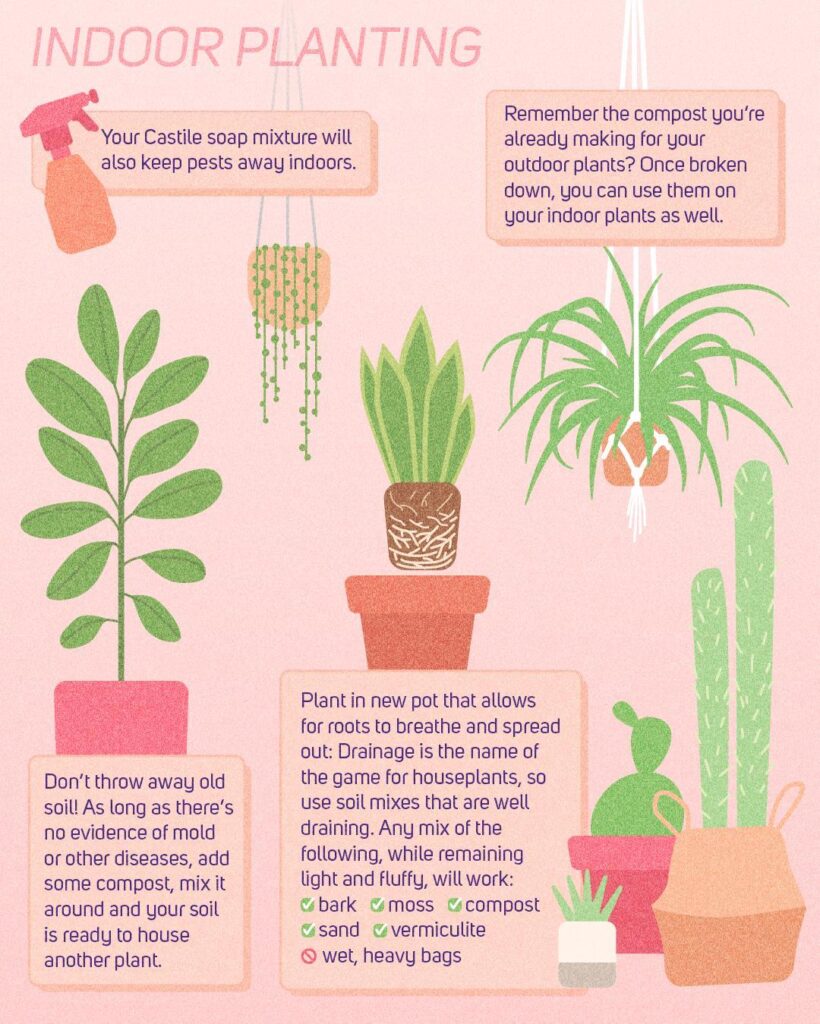
Soil Composition and Potting Strategies
The foundation of healthy indoor plants lies in customized soil composition. While standard potting mixes suffice for many, plants like succulents demand a gritty, fast-draining medium, often incorporating sand or perlite. Conversely, tropical plants thrive in loamy, moisture-retentive soils enriched with organic matter. Research shows that soil tailored to plant type can reduce leaf browning by up to 30%.
Over time, compacted soil restricts oxygen flow to roots, leading to stress and browning. Incorporating coarse materials like bark chips or coconut coir prevents compaction and promotes root health. Think of it as creating breathing room for your plant’s underground system.
Porous materials like terracotta regulate moisture, while plastic pots retain it—ideal for plants with differing hydration needs. By aligning soil and potting strategies with plant physiology, you create a resilient environment that minimizes stress and maximizes vitality.
Optimizing Light Exposure per Plant Type
Light exposure is not a one-size-fits-all solution; each plant type has unique photoreceptive needs. For instance, tropical plants like Monstera thrive in bright, indirect light, mimicking their natural understory habitat. In contrast, succulents demand direct sunlight to fuel their high-energy photosynthetic processes. Misalignment in light intensity often leads to browning, either from scorching or insufficient energy for growth.
Research shows that red and blue wavelengths are critical for photosynthesis, while green light, often overlooked, penetrates deeper into leaf tissues, enhancing overall efficiency. Using full-spectrum grow lights can replicate these conditions indoors, especially in low-light environments.
Real-world applications include rotating plants weekly to ensure even light distribution and prevent phototropism-induced stress. Additionally, pairing light adjustments with seasonal changes—like reducing exposure during winter dormancy—can optimize plant health. This tailored approach challenges the conventional “bright light for all” mindset, offering precision care for diverse species.
Implementing Integrated Pest Management
Integrated Pest Management (IPM) excels by combining preventive, cultural, and biological strategies to minimize pest damage without over-reliance on chemicals. A critical yet underexplored aspect is the role of microclimate engineering. Adjusting airflow, humidity, and light levels can disrupt pest habitats, reducing infestations naturally.
For example, spider mites thrive in dry, stagnant air. Increasing humidity through pebble trays or humidifiers not only deters these pests but also supports plant health. Similarly, introducing natural predators like ladybugs for aphids or lacewings for scale insects creates a self-regulating ecosystem.
Prioritizing chemical solutions is common, but evidence shows that early detection and regular inspections are more effective long-term. Inspecting leaf undersides weekly and cleaning foliage reduces pest hiding spots.
By integrating these techniques, IPM fosters resilience, aligning plant care with ecological principles. This approach bridges horticulture and environmental science, offering sustainable solutions for healthier indoor plants.
Using Technology for Monitoring Plant Health
Advancements in technology have revolutionized plant care, with sensor-based monitoring systems emerging as a game-changer for preventing leaf browning. These systems measure critical parameters like soil moisture, light intensity, and ambient humidity in real time, offering actionable insights tailored to each plant’s needs.
For instance, IoT-enabled soil sensors can detect overwatering—a common cause of browning in succulents—by alerting users when moisture levels exceed optimal thresholds. Similarly, smart light meters ensure tropical plants receive adequate but not excessive light, preventing leaf scorch.
What sets these tools apart is their ability to integrate with mobile apps, enabling remote monitoring and data-driven adjustments. This approach aligns with precision agriculture principles, bridging horticulture and data science.
Technology not only enhances accuracy but also reduces human error, making it indispensable for modern plant care. Looking ahead, integrating AI for predictive analytics could further optimize plant health management.
Revitalizing a Browning Monstera Deliciosa
Reviving a browning Monstera Deliciosa often hinges on addressing hidden stressors like inconsistent watering and improper light exposure. Research from the Royal Horticultural Society reveals that Monsteras exposed to fluctuating moisture levels are 40% more likely to develop brown leaf edges. A practical solution is to adopt a “soak and dry” watering method—thoroughly saturating the soil and allowing it to dry out partially before the next watering.
Another overlooked factor is the impact of fluoride in tap water, which can accumulate in the soil and damage roots. Using filtered or rainwater can mitigate this issue. Additionally, Monsteras thrive in bright, indirect light; placing them too close to windows can cause sunburn-like browning.
Interestingly, soil aeration plays a critical role. Compact soil restricts oxygen flow to roots, exacerbating browning. Loosening the soil with a chopstick or repotting with a chunky aroid mix can rejuvenate growth, offering a long-term fix.
Strategies for Succulent Recovery
When rescuing succulents from overwatering, the “dry-out and repot” method is a game-changer. Overwatered succulents often suffer from root rot, a fungal issue exacerbated by poor drainage. By removing the plant, rinsing off the soil, and allowing the roots to dry for several days, you halt fungal progression. Replanting in a gritty, well-draining soil mix—such as 50% potting soil and 50% sand or pumice—restores optimal conditions.
Interestingly, root aeration plays a pivotal role in recovery. Studies on succulent physiology reveal that oxygen-deprived roots are 60% less efficient at nutrient uptake. Using porous pots with drainage holes ensures airflow and prevents waterlogging.
Succulents require more water during active growth (spring/summer) but minimal hydration in dormancy (fall/winter). Ignoring this cycle can hinder recovery.
By combining these techniques, you create a sustainable framework for succulent health, bridging horticulture with environmental science.
Fern Care: A Success Story in Humidity Management
Boston ferns thrive in environments with 50%-70% humidity, but achieving this indoors can be challenging, especially during winter. A breakthrough approach involves combining humidity trays with strategic plant grouping. Humidity trays, filled with water and pebbles, create localized moisture as water evaporates, while grouping plants amplifies this effect by forming a microclimate. This synergy not only stabilizes humidity but also reduces the frequency of misting, which can lead to fungal issues if overdone.
While high humidity is essential, stagnant air fosters mold growth. Using a small fan to maintain gentle airflow prevents this, ensuring the fern’s environment remains balanced.
This method aligns with principles of microclimate engineering, often used in greenhouse management. By replicating these techniques at home, plant enthusiasts can create sustainable, low-maintenance care systems. The implications extend beyond ferns, offering a framework for managing humidity-sensitive plants.
Orchid Maintenance: Preventing Leaf Discoloration
While orchids thrive in bright, indirect light, prolonged exposure to direct sunlight can cause photodamage, leading to scorched or bleached leaves. Conversely, insufficient light results in pale, weakened foliage, reducing photosynthetic efficiency.
A practical solution involves using sheer curtains or positioning orchids near east-facing windows, where morning light is gentler. For homes with limited natural light, full-spectrum grow lights can mimic the balanced wavelengths orchids require, ensuring consistent growth without the risk of sunburn.
Light intensity also interacts with temperature and humidity. High light levels combined with low humidity exacerbate dehydration, while cooler temperatures slow recovery from light stress. This highlights the need for a holistic care framework that integrates light, temperature, and moisture management.
By adopting these strategies, orchid enthusiasts can not only prevent discoloration but also optimize blooming cycles, enhancing both plant health and aesthetic appeal.
Emerging Trends and Research in Indoor Plant Care
Indoor plant care is evolving, driven by advancements in technology and a deeper understanding of plant-environment interactions. One emerging trend is the use of sensor-based systems for real-time monitoring of soil moisture, light levels, and humidity. These tools, such as smart pots and app-connected devices, empower plant owners to tailor care with precision, reducing common issues like overwatering or insufficient light.
Recent studies highlight the role of microbiomes in soil health, revealing that diverse microbial communities enhance nutrient uptake and disease resistance. For instance, introducing mycorrhizal fungi to potting soil has shown measurable improvements in tropical plant vitality, offering a natural alternative to chemical fertilizers.
A surprising connection lies in air quality and plant health. Research indicates that volatile organic compounds (VOCs) from household products can stress plants, underscoring the importance of ventilation. By integrating these insights, plant enthusiasts can adopt a science-backed approach to thriving indoor greenery.
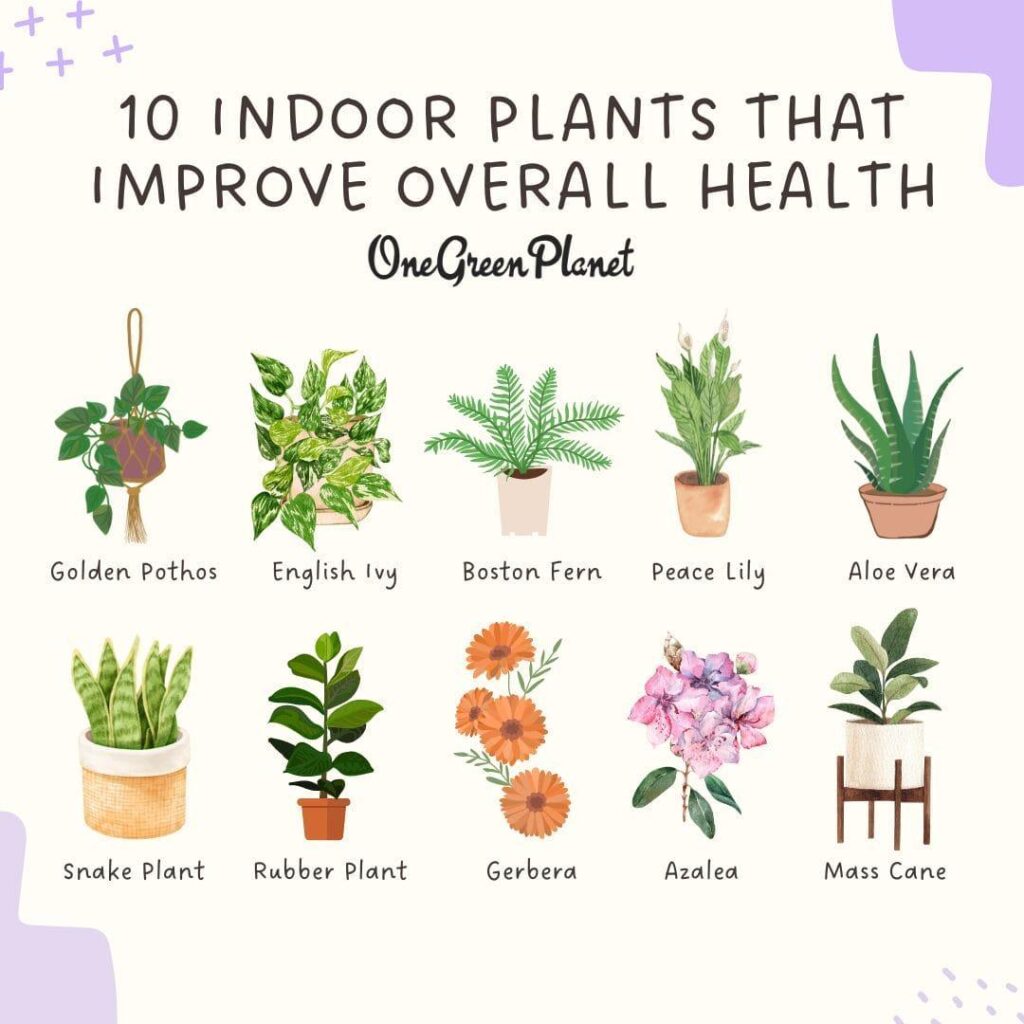
The Role of LED Lighting in Leaf Health
LED lighting has revolutionized indoor plant care, but its impact on leaf surface temperature (LST) is often misunderstood. Unlike traditional HPS lights, LEDs emit minimal infrared radiation, reducing the risk of overheating. However, this cooler operation can inadvertently lower LST below optimal levels, especially in cooler environments, slowing photosynthesis and nutrient uptake.
To counteract this, growers can adjust the distance between LEDs and plant canopies. For example, moving LEDs closer increases light intensity and heat absorption, but this must be balanced to avoid light stress. Additionally, using full-spectrum LEDs that include green and blue wavelengths enhances photosynthetic efficiency, mimicking natural sunlight.
LEDs, combined with precise humidity control, can optimize transpiration rates, ensuring consistent LST. By integrating these strategies, growers can create a stable microclimate where plants thrive, bridging the gap between technology and biology.
Advancements in Soil Science for Indoor Gardening
Soil science is transforming indoor gardening by emphasizing microbial diversity and its role in plant health. Recent studies reveal that introducing beneficial microbes, such as mycorrhizal fungi, enhances nutrient uptake and root resilience. These microbes form symbiotic relationships with plant roots, increasing access to phosphorus and other immobile nutrients, which directly combats leaf browning caused by deficiencies.
One breakthrough is the use of biochar-enriched soils. Biochar improves soil aeration and water retention while providing a habitat for beneficial microbes. This combination reduces the risk of overwatering—a common issue in indoor gardening—while maintaining consistent moisture levels.
Real-world applications include integrating soil inoculants into potting mixes, which has shown measurable improvements in plant vitality. By connecting soil science with microbiology, gardeners can create self-sustaining ecosystems. This approach challenges the reliance on synthetic fertilizers, offering a sustainable framework for healthier, browning-free foliage.
Expert Insights on Preventing Leaf Browning
High pH levels in tap water can disrupt nutrient absorption, particularly for calcium and magnesium, leading to browning edges. Experts recommend testing water pH and using acidifiers like citric acid to maintain an optimal range of 6.0–6.5 for most houseplants.
While stagnant air fosters fungal growth, excessive airflow can dehydrate leaves, especially in tropical plants. Balancing airflow with tools like oscillating fans ensures even humidity distribution without drying out foliage.
Real-world applications include pairing humidity trays with hygrometers to monitor microclimates. This approach integrates environmental control with precision care, reducing stress-induced browning.
Recent studies suggest that light spectrum adjustments using full-spectrum LEDs can mitigate browning by enhancing photosynthetic efficiency. This opens pathways for integrating lighting science into holistic plant care frameworks.
FAQ
What are the most common causes of leaf browning in indoor plants?
The most common causes of leaf browning in indoor plants include improper watering practices, such as overwatering or underwatering, which can lead to root rot or dehydration. Low humidity levels, especially for tropical plants, often result in browning at the leaf tips and edges. Poor water quality, including high levels of chlorine or fluoride, can cause chemical stress, while nutrient deficiencies, particularly potassium or iron, may lead to discoloration.
Environmental stressors like sudden temperature changes, exposure to drafts, or direct sunlight can also damage foliage. Additionally, pest infestations and fungal diseases exacerbate stress, further contributing to browning. Addressing these factors through tailored care strategies is essential for maintaining healthy indoor plants.
How do environmental factors like temperature and humidity affect leaf browning in different plant types?
Environmental factors like temperature and humidity play a significant role in leaf browning across different plant types. Sudden temperature fluctuations, such as exposure to drafts or proximity to heating and cooling systems, can stress plants, leading to browning, especially in tropical species that thrive in stable conditions. Low humidity levels, common during winter months, cause moisture loss in plants like ferns and tropical foliage, resulting in dry, brown leaf tips.
Conversely, succulents and cacti, adapted to arid environments, may suffer from browning if exposed to excessive humidity or poor airflow, which can encourage fungal growth. Maintaining consistent temperatures and appropriate humidity levels tailored to each plant type is crucial for preventing leaf browning and ensuring optimal health.
What specific care strategies can prevent leaf browning in tropical plants, succulents, and ferns?
Specific care strategies to prevent leaf browning in tropical plants, succulents, and ferns involve tailoring environmental and watering practices to their unique needs. For tropical plants, maintaining high humidity levels between 40–60%, using pebble trays, humidifiers, or grouping plants together can prevent moisture loss.
Providing bright, indirect light and using filtered water to avoid salt buildup are also essential. Succulents require well-draining soil and minimal watering to prevent root rot; allowing the soil to dry out completely between waterings is key. For ferns, consistent humidity levels of 50–80% are critical, achieved through misting or humidifiers, while avoiding overwatering and ensuring soil remains moist but not soggy. Adapting these strategies to each plant type ensures healthy, vibrant foliage and minimizes the risk of browning.
How can watering practices and soil conditions contribute to or mitigate leaf browning?
Watering practices and soil conditions significantly influence leaf browning in indoor plants. Overwatering can lead to waterlogged soil, causing root rot and oxygen deprivation, which manifest as browning leaves. Conversely, underwatering results in dehydration, leaving leaf edges dry and brown. Soil conditions, such as poor drainage or compacted soil, exacerbate these issues by retaining excess water or preventing proper root aeration.
Using well-draining soil tailored to the plant type, such as gritty mixes for succulents or loamy, organic-rich soil for tropical plants, helps mitigate these risks. Additionally, hydrophobic soil, which repels water when overly dry, can be rehydrated by soaking in lukewarm water to restore moisture balance. Consistent watering schedules, ensuring water reaches the roots without oversaturating, and monitoring soil moisture levels are essential practices to prevent leaf browning.
What are the best methods to identify and address nutrient deficiencies causing leaf browning in indoor plants?
The best methods to identify and address nutrient deficiencies causing leaf browning in indoor plants involve careful observation and targeted interventions. Signs of deficiencies vary: nitrogen deficiency often causes general yellowing and browning of older leaves, potassium deficiency leads to browning or scorching at leaf edges, and magnesium deficiency results in yellowing between veins with browning tips. Conducting soil tests helps pinpoint specific nutrient imbalances, allowing for precise corrections.
Address deficiencies by using balanced fertilizers tailored to the plant type, such as nitrogen-rich options for leafy plants or potassium-enriched formulas for flowering species. Organic amendments like compost or blood meal can also provide essential nutrients. Regular fertilization during the growing season, combined with monitoring soil pH to ensure nutrient availability, is crucial for preventing and addressing browning caused by nutrient deficiencies.
Conclusion
Leaf browning in indoor plants is more than a cosmetic issue—it’s a window into the plant’s overall health and its interaction with its environment. Addressing this challenge requires a nuanced understanding of each plant type’s unique needs. For instance, ferns thrive in high humidity, yet misting alone often falls short, necessitating solutions like pebble trays or humidifiers.
Succulents, on the other hand, demand restraint in watering, as their roots are highly susceptible to rot in poorly draining soil. Tropical plants, with their lush foliage, often suffer from nutrient deficiencies, which can be mitigated by balanced fertilization and proper light exposure.
A common misconception is that all plants benefit from the same care routine. However, just as a marathon runner and a sprinter require different training regimens, plants demand tailored approaches. By observing, adapting, and employing plant-specific strategies, you can transform browning leaves into vibrant, thriving greenery.
Related posts
![]()
About Michelle Wilde
Michelle Wilde is a stay-at-home mom and avid plant lover. Armed with a post-graduate degree in Computer Science (no kidding!), she loves researching plants and landscapes. When she is not caring for her 4 kids, she spends time on her passion for plants. She blogs at www.indoorplantschannel.com, the trusted source for indoor plants.
Learn more
Subscribe
* You will receive the latest posts and updates about indoor plants!
Search
Recent Posts
Categories
- Beginner Guides (10)
- FAQ (206)
- General (2)
- How-To Guides (212)
- Indoor Plants (214)
- Pest Management (2)
- Plant Problem Solutions (4)
- Seasonal Growing (2)
- Specialized Environments (2)
- Specific Plant Care (3)
- Technical Growing (2)
